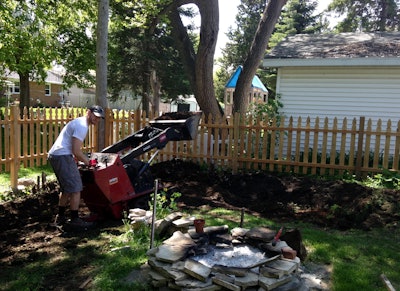
It looks like 2015 is shaping up to be the year of the mini-loader. In the lead-up to spring, four of the industry's top six manufacturers introduced brand new models. Call them what you want—mini-loaders, mini skid-steers or compact utility loaders—these "little jobsite worker bees" have become a tool of choice for landscape and hardscape contractors.
Manufacturers have obviously taken notice. Take Toro, for instance, maker of the Dingo compact utility loader (CUL). The recent introduction of the TX 1000 and TX 1000 Wide Track bring the Dingo lineup's total to nine models. These two new models represent the biggest in the line.
“We continue to give customers an excellent CUL solution—from our entry-level model, the wheeled 220 (515-pound rated operating capacity), all the way up to the all-new TX 1000 Wide Track which boasts the highest operating capacity of any CUL at 1,075 pounds,” says Sean O’Halloran, marketing manager for The Toro Company.
Contractors can now choose from a variety of Dingo configurations, including narrow-track, wide-track and wheeled. Plus, the Dingo loaders can be equipped with or without dedicated platforms, giving users the option of standing/riding on the loader or walking behind it.
“It all comes down to operator preference and choosing the best tool for the job,” O’Halloran adds. “Some contractors appreciate the compact size of a wheeled unit, while others prefer the flexibility of a tracked model. We want to make sure that as a leader in the industry, contractors have the options they need to get the job done efficiently and safely.”
Boxer Equipment is striving to do the same thing. Its mini-loader lineup has comprised four track-drive models: the 320 gas-powered loader with a 438-pound rated operating capacity, along with the larger 322D, 525DX and 532DX diesel-powered loaders. This spring, after two years of research and development, Boxer rolled out its 900XD with a 939-pound rated operating capacity, calling it the most capable and powerful mini-loader on the market.
Both new Toro TX 1000 machines actually have higher rated operating capacities than the Boxer 900XD. But you should look at more than just rated operating capacity, says Jason Showers, Boxer product manager.
"The rated operating capacity, while an important specification, is not the most significant machine feature when you take all of the Boxer 900HD’s additional capabilities into consideration in terms of operator comfort and amenities, overall capacities and machine specifications," Showers explains. “The 900HD includes many class-leading characteristics previously found only on full-size skid-steer loaders, like a 48-hp Tier 4 Final diesel engine with Diesel Oxidation Catalyst (DOC) that does not require after-treatment, dual-pattern operator controls, and a 94-inch hinge pin height that allows users to easily dump material over a 6-foot side wall."
Ditch Witch is yet another manufacturer to have recently rolled out its biggest mini-loader to date. The SK850 is powered by a 37-hp engine and has an 860-pound rated operating capacity. It joins the smaller SK350 and SK750/755 track machines, along with the wheeled Zahn Tool Carrier.
Why would a landscape contractor choose the SK850 over another Ditch Witch model? "One word: horsepower," says Andrew Schuermann, a product manager for Ditch Witch. The 37-hp Yanmar diesel engine supplies 29-hp to the attachment. "That's enough power to efficiently create a trench in tough ground or drill a 24-inch hole," Schuermann points out. The heftier rated operating capacity can also prove important, as can the SK850's 83-inch hinge pin height, which allows the operator to dump materials into the back of his truck or trailer.
Vermeer has actually gone the other direction this year and introduced one of its smallest of mini-loaders. “The CTX50 was designed for the rental market,” says Andy Van Soelen, rental and landscape solutions specialist for Vermeer. “Rental store customers such as landscape contractors will get good use out of the CTX50 due to the machine’s compact size and other features."
The Vermeer CTX50 features a 25-hp engine and 600-pound rated operating capacity. Other Vermeer machines include the S450TX (24.8 hp, 500-pound ROC), the S725TX (24.8 hp, 750-pound ROC), and the S800TX (40 hp, 840-pound ROC).
Picking the right machine for you
With so many sizes, configurations and options to choose from, contractors might become a little overwhelmed when shopping for a mini-loader. Toro's Sean O'Halloran offers the following product-selection tips.
As pointed out earlier by Boxer Equipment's Jason Showers, while not the only important consideration, rated operating capacity is indeed important. "Heavy-duty projects typically require higher lifting capacities," O'Halloran reminds.
Another thing to consider is ground speed. "Projects with a larger footprint may dictate the need for higher ground speeds," O'Halloran points out.
Hinge pin height, which generally equates to how high a mini-loader can lift its arms, is something else to look at. "This is important in applications that may require the operator to dump material in a standard dumpster or one-ton truck," O'Halloran says.
While most of the mini-loaders available today have tracks, Toro does offer a few wheeled versions. The Ditch Witch Zahn Tool Carrier is also a wheeled machine. You must think about the type of work you'll be doing to determine whether tracks or wheels would be better. Tracks do a great job of distributing machine weight to help maintain existing turf. That said, wheels typically do just fine, too, because they’re generally lighter machines.
On that note, weight is also an important consideration. "Many operators believe that lighter units and tracks help maintain existing turf better, and prefer to use smaller models when this is the case," O'Halloran points out.
Additionally, the overall size of the machine can be very important. "A compact utility loader will occasionally need to fit inside a standard 36-inch gate to gain access to a customer's backyard," O'Halloran explains. "Loaders with smaller footprints are often required to work in tight areas as well."
Finally, look for a mini-loader with design elements that enhance operator comfort. Operator comfort—and preference in general—is really key. Some operators prefer gas over diesel fuel, wheels vs. tracks, walking vs. standing/riding, etc. "The bottom line is that if an operator feels comfortable on a machine, it will result in increased uptime on the site," O'Halloran says.



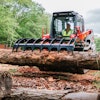

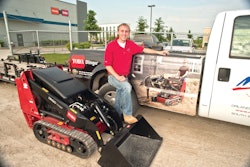

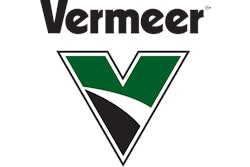
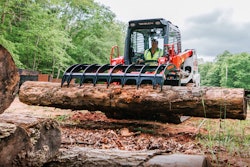







![Doosan Bobcat Wacker Neuson Stack 2ec Js Pb V6e[1]](https://img.greenindustrypros.com/mindful/acbm/workspaces/default/uploads/2025/12/doosan-bobcat-wacker-neuson-stack2ecjspbv6e1.CPyyz8ubHn.png?ar=16%3A9&auto=format%2Ccompress&bg=fff&fill-color=fff&fit=fill&h=135&q=70&w=240)



